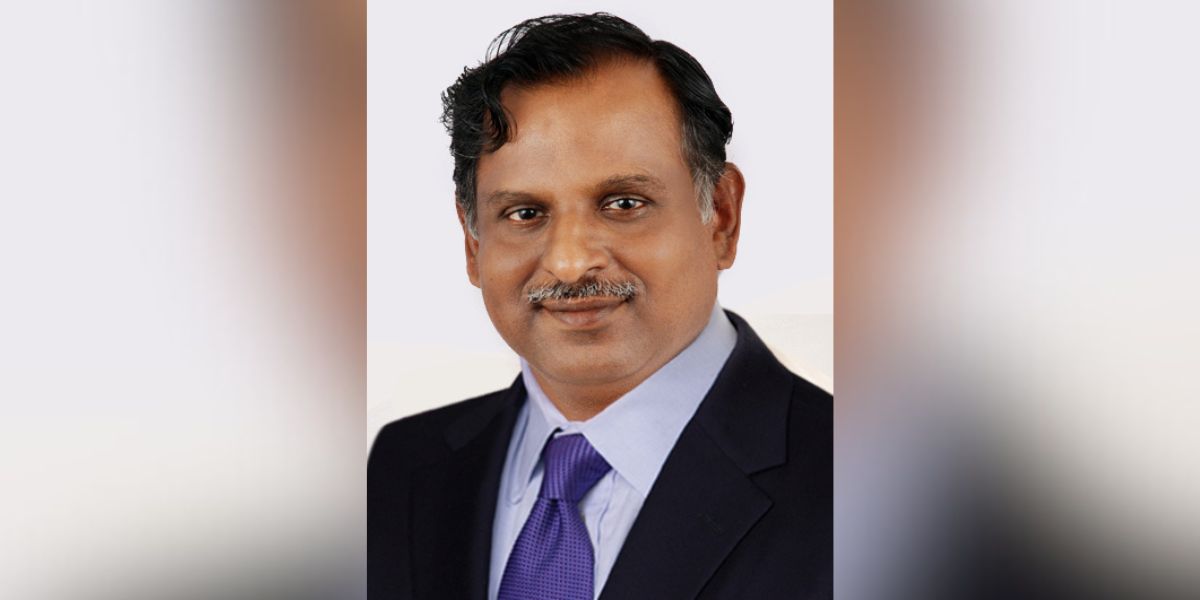Narayanan, a distinguished rocket scientist, has nearly four decades of experience and has held various key positions within the ISRO.
Published Jan 08, 2025 | 9:56 AM ⚊ Updated Jan 08, 2025 | 9:56 AM

Dr V Narayanan. (ISRO)
The Union government appointed Dr V Narayanan Secretary as the Department of Space Secretary, on Tuesday, 7 January. He succeeds Dr S Somanath, who will complete his tenure next week.
A native of Kanniyakumari in Tamil Nadu, Narayanan will also take over the position of chief of the Indian Space Research Organisation (ISRO) from Somnath, who will retire on 14 January.
He is currently the Director of the Liquid Propulsion Systems Centre (LPSC) of the ISRO.
“The Appointments Committee of the Cabinet has approved appointment of Shri V. Narayanan, Director, Liquid Propulsion Systems Centre, Valiamala as Secretary, Department of Space and Chairman, Space Commission for a period of two years with effect from 14.01.2025, or until further orders, whichever is earlier,” said the official order.
Narayanan, a distinguished rocket scientist, has nearly four decades of experience and has held various key positions within the ISRO.
Narayanan’s expertise lies in rocket and spacecraft propulsion. He was the Project Director for the C25 Cryogenic Project of the Geosynchronous Satellite Launch Vehicle (GSLV) Mk Ill.
Under his leadership, the team successfully developed the C25 Stage, a vital component of GSLV Mk III.
Narayanan, who is a Rocket & Space Craft Propulsion Expert, joined the ISRO in 1984 and functioned in various capacities before becoming Director of the Centre.
During the initial phase, for four and a half years, he worked in the Solid Propulsion area of Sounding Rockets and Augmented Satellite Launch Vehicle (ASLV) and Polar Satellite Launch Vehicle (PSLV) in Vikram Sarabhai Space Centre (VSSC).
As ISRO is gearing up for a pivotal year with a series of high-stakes missions in the first half of 2025, the appointment of Narayanan is significant.
Known for his expertise in cryogenic propulsion systems and a legacy of technical excellence, Narayanan brings decades of scientific rigour and visionary leadership to the helm of India’s premier space agency.
He is an alumnus of the Indian Institute of Technology (IIT) Kharagpur, who completed an M Tech programme in Cryogenic Engineering in 1989 and and PhD in Aerospace Engineering in 2001.
Over the years, he has been recognised with numerous accolades, including the National Design Award (2019), the National Aeronautical Prize (2019), and the Distinguished Alumnus Award (2018) from IIT Kharagpur.
Narayanan’s career is anchored in his contributions to rocket propulsion and cryogenic technologies, critical components of ISRO’s ambitious space exploration agenda.
Under his leadership, India’s cryogenic propulsion capabilities reached new heights, playing a decisive role in the success of landmark missions like Chandrayaan-3 and the Gaganyaan programme.
Narayanan is a member of prestigious organisations like the International Academy of Astronautics (IAA) and a Fellow of the Indian National Academy of Engineering.
A prolific researcher and academician, he has authored over 1,200 technical reports, numerous papers and book chapters, besides delivering keynote addresses and convocation speeches at premier institutions across India.
As the Chairman of the National Expert Committee constituted to study the reasons for the hard landing of the Chandrayaan-2 lander, he was part of pinpointing the reasons and corrective actions required to overcome the observations. The team realised and delivered all the Propulsion Systems for Chandrayaan-3.
He has also been working on the Human Rating of C25 and L110 liquid stages of Launch Vehicle Mark-3 (LVM3), the development of propulsion modules for the crew module and service module, and the Cabin pressure control systems for ISRO’s maiden human space flight mission Gaganyaan.
In 2025, ISRO is set to launch several key projects.
The Gaganyaan programme’s female humanoid, Vyommitra, is set to undergo crucial spaceflight experiments, symbolising India’s readiness for human spaceflight missions.
March 2025 will witness the launch of NASA-ISRO Synthetic Aperture Radar (NISAR), the world’s most expensive satellite at ₹12,505 crore, developed in collaboration with the US space agency National Aeronautics and Space Administration (NASA).
NISAR, equipped with state-of-the-art radar systems, is expected to revolutionise Earth observation, addressing challenges like climate change and natural disasters.
Adding to the momentum is the LVM3-M5 mission, scheduled for the first quarter of 2025, which will serve an international customer, highlighting India’s growing prominence in the global space market.
Additionally, ISRO will launch a satellite for direct mobile communication for the US by February or March, further showcasing India’s prowess in delivering cutting-edge space solutions.
(With inputs from Dileep V Kumar.)
